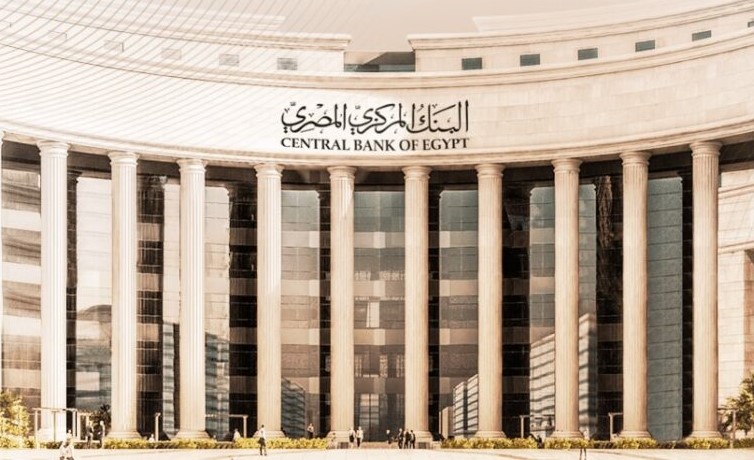The Monetary Policy Committee (MPC) of the Central Bank of Egypt (CBE) will convene its fifth meeting of 2025 on Thursday, with markets and analysts awaiting what many believe will be another milestone in Egypt’s monetary easing cycle. After months of slowing inflation and signs of macroeconomic stability, there is now a near-consensus among experts and investment banks that the CBE will reduce its key policy rates by between 1% and 2%.
The upcoming decision comes at a critical juncture for Egypt’s economy. Policymakers are seeking to sustain the progress achieved in curbing inflation while simultaneously laying the groundwork for stronger private sector activity, investment inflows, and growth momentum. The debate now centres not on whether rates will be cut, but by how much — and how rapidly the easing cycle will unfold in the months ahead.
At its last meeting on 10 July, the MPC opted to keep its key rates unchanged: 24% for overnight deposits, 25% for overnight lending, and 24.5% for both the credit and discount rate and the main operation rate. That pause followed two successive rate cuts earlier in the year: a 225-basis-point reduction on 17 April and a further 100 basis points on 22 May.
In its July communiqué, the Committee explained that maintaining rates was “preferable” in order to allow time to assess the effects of new fiscal measures — including amendments to the value-added tax law and changes in administered prices — on inflationary dynamics. The MPC underscored that its decisions would continue to be data-dependent and conditional on the inflation outlook, potential risks, and external developments.
Inflation picture: A steady decline
Latest figures suggest that inflationary pressures have been easing consistently since the start of the year.
- Core inflation, as measured by the CBE, stood at 11.6% in July, up slightly from 11.4% in June but still well below last year’s peaks. On a monthly basis, core consumer prices actually declined by 0.3% in July, compared to a 0.2% decline in June.
- Urban headline inflation, published by CAPMAS, fell to 13.9% in July from 14.9% in June. The monthly urban CPI contracted by 0.5% in July after a 0.1% drop in June — further evidence that disinflationary forces are gaining strength.
The CBE projects that annual headline inflation will remain broadly stable at current levels for the rest of 2025 before resuming a gradual decline in 2026, converging towards the medium-term target of 7% (±2%) on average in Q4 2026. Much of this trajectory hinges on the impact of non-food price adjustments, global commodity trends, and fiscal consolidation measures.

Expert views: Divided between 1% and 2% cuts
Banking veteran Mohamed Abdel Aal expects the MPC to opt for a 200-basis-point cut, resuming the easing cycle after July’s pause.
“Both headline and core inflation have now stabilised — at 13.9% and 11.6% respectively — largely due to lower food and beverage prices, which offset pressures from non-food inflation linked to administered price adjustments,” he said.
According to Abdel Aal, external disinflationary forces are reinforcing the trend. “Global declines in raw materials and imported goods prices are cushioning the domestic impact of subsidy rationalisation and higher VAT. This will likely allow inflation to continue falling through year-end.”
He argued that the CBE now has space to reduce rates without jeopardising stability:
- Macroeconomic indicators remain broadly stable.
- Global geopolitical tensions have eased somewhat.
- Real interest rates have widened to levels that risk stifling private sector recovery.
“By year-end, I expect a total of 400 basis points in cumulative cuts, bringing the key rate closer to 20%,” Abdel Aal said. “A 200-basis-point cut would send the right signal.”
Still, he cautioned that the MPC could decide to remain conservative, particularly if it wishes to gauge the effects of customs duties or renewed regional instability.
Furthermore, HC Securities’ research team also forecasts a 2% cut, pointing to improved external indicators.
Macroeconomic analyst Heba Mounir highlighted several stabilising factors:
- The Egyptian pound has appreciated around 5% year-to-date.
- Egypt’s one-year credit default swap (CDS) spread has narrowed, signalling reduced sovereign risk.
- Workers’ remittances have increased, bolstering FX inflows.
- Net international reserves have expanded, providing a stronger buffer.
- The banking system’s net foreign asset position has improved.
In parallel, Egypt’s domestic debt market continues to attract foreign participation. The latest 12-month Treasury bill auction cleared at 26.08%, equivalent to a positive real yield of 6.66% (after tax, based on HC’s inflation estimate).
“Despite expectations of rising energy costs, the MPC has room to cut rates by 200 basis points,” Mounir argued. “Slowing inflation, stronger external accounts, and the appreciation of the pound all strengthen the case.”
In contrast, banking analyst Shaimaa Wagih believes the MPC will prefer a more measured approach — a 100-basis-point cut.
“The CBE must strike a delicate balance: supporting growth while ensuring financial stability,” she said. “Inflation has slowed, but risks remain from Egypt’s foreign currency financing needs and potential capital outflows if yields fall too quickly.”
She noted that:
- A gradual 1% cut would help ease borrowing costs for businesses and households without creating undue pressure on the pound.
- Cheaper credit would boost investment, lending, and liquidity in the stock market.
- The government would benefit from lower debt servicing costs, freeing fiscal space for social and developmental spending.
However, she cautioned that overly aggressive cuts could deter foreign investors in Treasury bills and bonds. “Capital flows need close monitoring,” she stressed. “A cautious pace avoids the risk of inflationary rebound.”
For Wagih, the most “professional” scenario is therefore a modest 100-basis-point cut that signals commitment to easing without triggering instability.

Market surveys: Consensus on cuts
Two major international surveys reinforce expectations of a rate reduction:
- A Reuters pollof economists found consensus around a 100-basis-point cut at Thursday’s meeting, aimed at supporting growth amid declining inflation.
- A Bloomberg surveyof eight investment banks reached a similar conclusion, with most forecasting at least a 100-basis-point cut. Only two institutions anticipated rates remaining unchanged.
Among the banks participating in the surveys were EFG Holding, Naeem, Zeila Capital, CI Capital, Ahli Pharos, Prime, Mubasher Financial Services, Thndr, Cairo Capital, and Arabia Online.

Implications for the economy
1. Private sector revival
Lower interest rates would reduce financing costs for businesses, encouraging investment and expansion. This is particularly important for Egypt’s manufacturing and SME sectors, which have been squeezed by years of tight monetary conditions.
2. Banking sector dynamics
While banks could face narrower margins on interest spreads, this may be offset by stronger lending volumes. Retail credit — from mortgages to consumer loans — is likely to benefit, while corporate borrowing could regain momentum.
3. Capital markets boost
The stock market could see renewed liquidity as investors rebalance portfolios away from short-term debt instruments. Historically, rate cuts have been accompanied by rallies in equities, particularly in interest-rate-sensitive sectors such as real estate and banking.
4. Fiscal relief
Lower rates would ease the government’s debt servicing burden. With debt costs consuming a significant portion of expenditure, even a modest reduction could free resources for public investment, infrastructure, and social protection.
5. Risks to manage
The main risks lie in external financing and the pound’s stability. A sudden outflow of foreign portfolio investment or a spike in energy import costs could put pressure on the exchange rate. This explains why some analysts favour gradualism over aggressive cuts.
Global context
Egypt’s anticipated move comes amid a broader shift in emerging markets, where central banks are cautiously unwinding the steep hikes of the past two years. Brazil, Chile, and Hungary have all entered easing cycles, while Turkey and South Africa are expected to follow suit in late 2025.
At the same time, the U.S. Federal Reserve and the European Central Bank have signalled that their tightening cycles are over, with markets pricing in potential rate cuts in early 2026. This global backdrop provides the CBE with some room to manoeuvre, as capital flows into emerging markets remain supportive.
Looking ahead
MPC decision will likely set the tone for monetary policy in the final quarter of 2025. If the CBE opts for a bolder 200-basis-point cut, it could signal an acceleration of the easing cycle. A more cautious 100-basis-point move, however, would suggest gradualism and careful calibration.
Either way, analysts agree that the trajectory is downward, with policy rates expected to decline by at least 300–400 basis points by year-end — provided inflation remains on its current disinflationary path.
The balancing act for Egypt’s policymakers is clear: continue to anchor inflation expectations while providing breathing space for the private sector and supporting growth. The choice between a 1% or 2% cut may be tactical — but the direction of travel is unmistakable.




